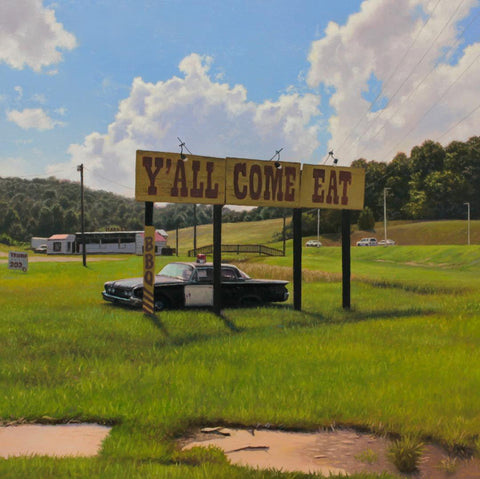Art movements between America and Europe differ from one another greatly. This should come as no surprise – the vastness of the Atlantic Ocean separating the two continents creates a physical distance so large that it’s impossible for art to evolve in the same direction. The themes underscoring American and European currents in modern art connect inextricably to history and politics. To identify and understand what made the two approaches so different, we will need to explore the historical contexts, as well as look at what drove and inspired artists from both continents. Read on to find out more!
If you need a primer on modern art, read this article first: What is Modern Art?
What Inspired Creators of the Modern Art Movement?
To start, it’s important to note that American painters became familiar with what we now call the European strain of modern art only in the early twentieth century. Up until that point, America had been enamored by visions of newly acquired freedom, patriotism, and manifest destiny. These motifs were most often portrayed and reflected in the works of contemporary painters.
Europe’s artists, on the other hand, ushered in modernism by defying traditionalistic approaches. Art ceased to be focused only on extravagant beauty – instead, artists began moving toward Realism and Impressionism. Many of them were inspired by political conflict and insurrectionist movements of the time, with some historians pointing even to the French Evolution as the initial catalyst
The tumultuous period of the early nineteenth century contributed to artists abandoning tradition in favor of an anti-idealistic approach. In the emotional wake of the anti-monarchical 1848 revolutions, many advocated for the popularization of art among all of society rather than restricting access to those of high social status.
It’s worth noting that access to art had already been becoming more commonplace in other corners of the world, for example in Japan – a major influence for European artists back then. When the country re-opened its borders to outsiders in 1858, European art fanatics and Impressionists, including Claude Monet and Gustav Klimt, became fascinated by Japanese woodblock painting, or ukiyo-e.

Mark's Market - 7" x 7" oil on panel - Matthew Cornell
Entering into Modernism Proper
At the outset of what we call the modern art period, in the U.S., more focus was placed on painting landscapes and exploring the American way of life. Thomas Cole, Winslow Homer, and Eastman Johnson are among those who aimed to show beauty in nature and everyday life. When America found itself embroiled in its own Civil War, painters likewise started to shift the tone of their works. Heroism and nationalistic imagery became more prominent subjects.
Later on, as moods in Europe shifted away from Realism and Impressionism, art evolved and gave us movements we most closely associate with modern art: Cubism, Expressionism, Fauvism, and Surrealism. Great artists like Vincent van Gogh and Pablo Picasso spearheaded this era. It was the works of these painters, among others, that popularized European modern art in American society and signaled a shift in their creative endeavors as well. This trend would continue well past World War I, as many artists fled from the old continent to the United States.
Post-World War II Modern Art: Differences between America and Europe
After World War II, European trends continued without significant shifts. Traumatized by a second global conflict ravaging their land, Surrealists, Expressionists, and Cubists questioned life and the, at times, unthinkable and absurd levels of human cruelty enacted upon others.
Perhaps the most famous piece of circa World War II art is Pablo Picasso’s Guernica, depicting a massacre that took place in the Spanish village of the same name. European artists drew heavily from their trauma, which eventually led to the birth of existentialist and absurdist movements.
Conversely, America was filled with plenty of post-war optimism. Thanks to an even bigger presence of immigrants, the United States became the center of the world’s art scene. New York City quickly gained enough popularity to overtake European cultural centers, such as Paris. Abstract expressionism emerged as a dominant movement, with artists like Jackson Pollock and Willem de Kooning becoming key figures within the movement.
With a booming post-war economy and a capitalist society now in full swing, consumers became the focal point, giving rise to Pop Art, Conceptual Art, and a host of other, more commodified forms of expression.
The Takeaway
Modern art spans over 100 years of creative endeavors by artists from different backgrounds. The key differences in American art vs. European art of the time relate very strongly to historical and political conflict, in particular to both World Wars. However, it was also the time that made art more accessible to common folk.
You may also be interested in: What Is Impressionism Art?
